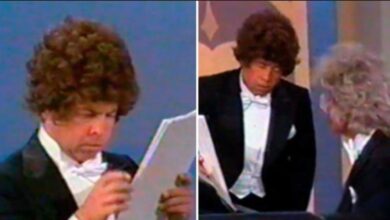The Kinks’ “Tired of Waiting for You” Steers British Rock Toward Melody-Driven Maturity in 1965
Released in January 1965, “Tired of Waiting for You” arrived like a cool breeze after the sonic squall of The Kinks’ earlier hits, immediately distinguishing itself with a gentler tempo and introspective tone. Listeners who expected another blast of distorted power-chords instead found a reflective anthem whose refrain—equal parts yearning and resignation—felt strikingly adult for a band still riding the rebellious wave of the British Invasion. Within three weeks it topped the UK Singles Chart and soon glided to number six on America’s Billboard Hot 100, proving that raw garage energy could coexist with sophisticated pop craft without dulling commercial fire.
The group that forged this breakthrough had emerged barely two years earlier from Muswell Hill in North London, where brothers Ray and Dave Davies spent their teens absorbing skiffle, blues, and music-hall traditions. Unlike many peers, the siblings shared an almost literary bent; Ray’s wry observations and Dave’s visceral guitar slashes created a magnetic contrast that set The Kinks apart from more polished contemporaries. By late 1964 they had already scored with “You Really Got Me” and “All Day and All of the Night,” records that changed rock guitar permanently, but their restless curiosity meant they were never content to repeat a formula.
Legend has it that Ray Davies wrote “Tired of Waiting for You” on an acoustic guitar while recovering from a throat infection, musing aloud about the endless hours spent waiting for touring schedules to settle and for a distant girlfriend to answer letters. Whether the tale is apocryphal or not, the lyric’s quiet frustration felt genuine, capturing the universal inconvenience of suspended desire. Ray’s notebooks from that period reveal multiple drafts in which he crossed out harsher lines, deliberately softening the edge until the song spoke with calm resignation rather than raw anger—an early sign of his emerging storyteller’s instinct.
Recording sessions took place in late August 1964 at Pye Studios in London with American producer Shel Talmy behind the console, fresh from chasing distorted thunder on the band’s previous singles. This time Talmy encouraged restraint: drummer Mick Avory’s snare was dampened with tea-towels, while Dave Davies swapped his roaring Elpico-cranked amplifier for a cleaner Vox AC30, creating a chiming pattern that pulsed beneath Ray’s double-tracked vocals. Backing harmonies by bassist Pete Quaife were mixed unusually high, giving the chorus its floating, near-choral quality and predicting the baroque textures that would characterize late-sixties pop.
Critics greeted the single as proof that The Kinks possessed a broader palette than mere proto-metal riffing. New Musical Express praised its “mellifluous melancholy,” and readers propelled it to number one in Britain for two consecutive weeks despite fierce competition from The Beatles’ “I Feel Fine.” In the United States—then still wary of UK acts beyond Lennon-McCartney—the song’s softer surface eased radio resistance, earning heavy rotation on adult-oriented stations and securing gold-record sales before summer’s end. The sudden crossover demonstrated that rock could slip into living rooms that had previously tuned it out.
Culturally, the track marked a hinge moment: it signaled that British beat groups were moving from dance-floor rave-ups toward nuanced, songwriter-led expressions. For teenagers navigating post-war conformity, the lyric’s restless ennui resonated, while older listeners could appreciate its controlled musicianship. The single helped blur the perceived barrier between youth-oriented rock and the sophisticated pop once monopolized by Tin Pan Alley, nudging industry gatekeepers to reconsider playlist boundaries on both sides of the Atlantic.
For The Kinks, the success of “Tired of Waiting for You” delivered more than chart glory; it granted Ray Davies the artistic leverage to pursue increasingly elaborate narratives. Pye Records green-lit quick studio time for the album Kinda Kinks, while promoters booked the band into continental venues that had previously balked at their “wild” reputation. International press began framing Ray as a songwriter-philosopher rather than a lucky riff-maker, an upgrade in status that paid dividends when the group later unveiled social-commentary masterworks like “Waterloo Sunset” and “Sunny Afternoon.”
The song’s embrace of mid-tempo reflection rippled outward through the decade, influencing proto-power-pop outfits such as The Who during their A Quick One phase and inspiring American acts like The Byrds to temper jangle with lyrical pining. Its understated arrangement offered a template for later Britpop architects—Blur’s Damon Albarn has cited it as an early lesson in marrying conversational lyrics to hummable hooks—while its tension-and-release chord movement became a staple for countless guitar bands chasing bittersweet moods.
Although “Tired of Waiting for You” never attained the cover-version ubiquity of some sixties standards, its select reinterpretations underscore its versatility. Soul singer Bobby Womack injected gospel grit into a 1972 reading, swapping the original’s clipped guitar for swirling organ lines, while punk revivalists The Queers sped it up to bubblegum velocity on their 1994 album Beat Off. Ray Davies himself revisited the song in 2010 for his collaborative project See My Friends, trading verses with Gary Lightbody of Snow Patrol to reveal fresh poignancy in the half-century-old refrain.
The single also intersected with dramatic events surrounding the band. In April 1965, mere months after its release, a notorious backstage brawl during an American TV taping triggered a temporary U.S. Musicians’ Union ban on The Kinks, abruptly halting their stateside momentum. Ironically, the reflective calm of “Tired of Waiting for You” contrasted starkly with tabloid depictions of the group as unruly hell-raisers, creating a public image tension that Ray would mine for future compositions about fame’s double edge.
Decades later, the track enjoys perennial radio presence, anchoring classic-rock playlists and Spotify sixties collections with equal grace. It frequently appears in “greatest songs of the era” polls, and its lean two-minutes-thirty-seconds running time makes it catnip for film soundtracks seeking instant nostalgic lift—most memorably, 2010’s The Kids Are All Right leveraged its gorgeous fade-out to underline a bittersweet family dinner scene. Streaming numbers consistently place it among The Kinks’ top five most-played tracks, proof of undimmed appeal.
In a broader sense, “Tired of Waiting for You” anticipated musical shifts that would dominate the late sixties: gentler vocals layered over electric textures, introspective lyrics couched in accessible melodies, and production choices that favored emotional nuance over sheer volume. Its success encouraged producers to balance raw and refined elements within a single track, a principle that guided everything from folk-rock fusions to early soft-rock balladry. Ray’s conversational delivery also foreshadowed the confessional singer-songwriter movement soon to be championed by artists like Paul Simon and Joni Mitchell.
The Kinks have since accumulated honors—from their 1990 induction into the Rock and Roll Hall of Fame to various lifetime-achievement awards—but “Tired of Waiting for You” often receives special mention during tributes, lauded as the record that proved the Davies brothers could marry intellect to instinct. When Ray accepted the BMI Icon Award in 2006, he singled it out as a personal favorite, praising its “economy of words” and crediting Dave’s subtle guitar for imbuing each line with ambivalent longing.
Ultimately, the song endures because its central emotion—impatience tinged with tenderness—remains both immediate and timeless. Each generation discovers it anew, hearing in its ringing chords the universal experience of standing at an emotional crossroads, unsure whether to press forward or hold on a little longer. By transforming adolescent frustration into elegant pop, The Kinks broadened rock’s expressive range and opened a door through which countless artists would later walk. More than sixty years on, “Tired of Waiting for You” still reminds us that sometimes the quietest confessions carry the farthest echoes.





